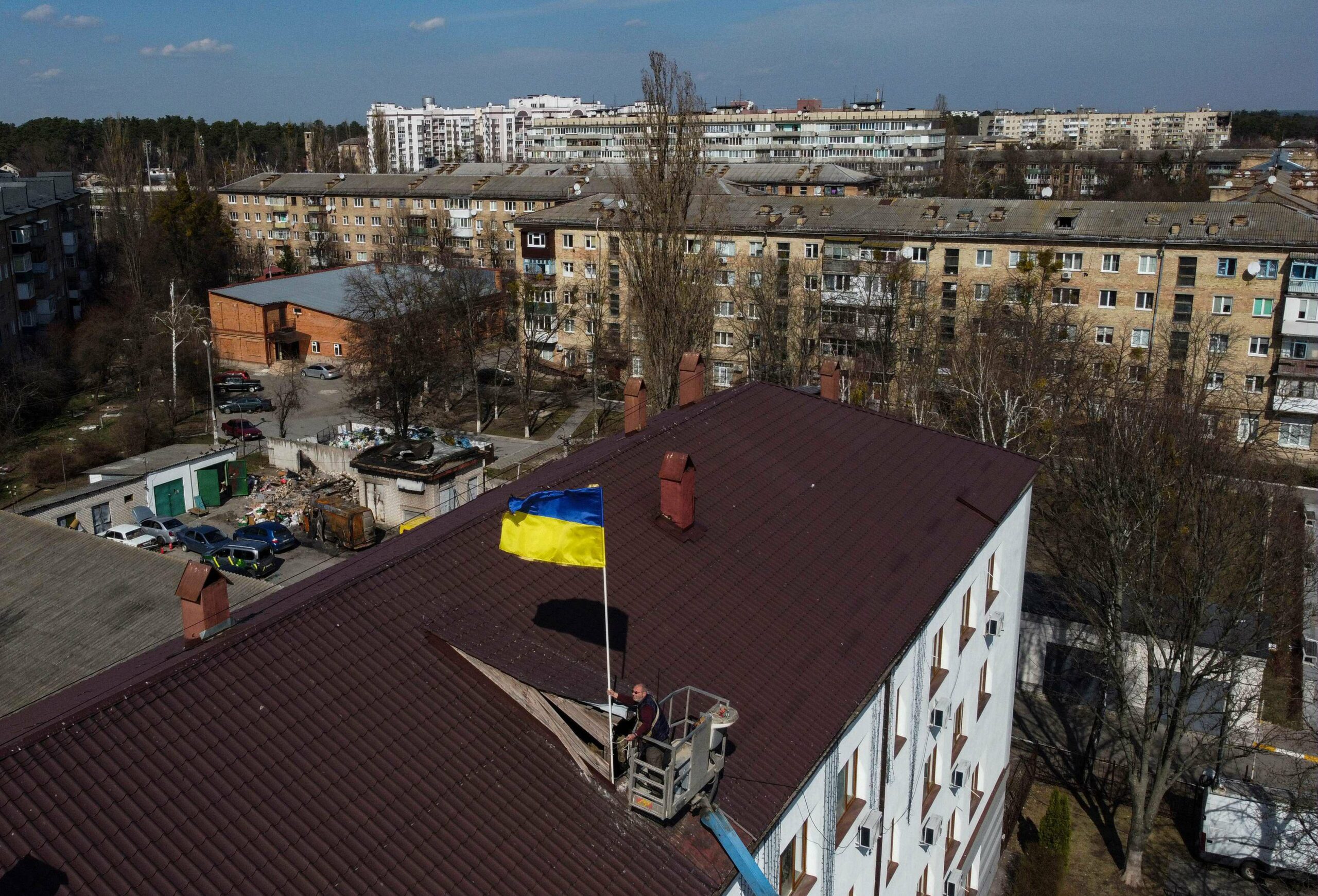Russians start to see evidence of high military casualties in Ukraine
Emerging footage adds weight to sense that number of deaths is far greater than officials admit
Andrew Roth
A phone camera pans slowly across the portraits of 55 men, each wearing the dress uniform of Russia’s elite airborne units. Small candles have been placed by the photographs of the men, as have sky blue berets and the blue-and-white striped undershirts worn by the paratrooper units who led Russia’s invasion of
Ukraine.
The video of the memorial for the soldiers of the 247th Guards Air Assault Regiment is unverified – it was first published by Russia’s iStories news outlet, which said it was submitted by a reader.
But the footage adds weight to a growing consensus that the numbers of Russian casualties – especially among elite units such as the Russian airborne – are far higher than officials have so far admitted.
Dmitry Peskov, the Kremlin spokesperson, said on Thursday that the country had “significant losses of troops and it’s a huge tragedy for us” during an interview on Sky News.
The frank admission of the scale of Russian losses is rare among government officials, who have consistently assured the public and Vladimir Putin that Russia’s “special operation” is going according to plan.
In an attempt at damage control on Friday, Peskov said he was referring to the official defence ministry numbers of 1,351 soldiers killed since Russia launched its invasion on 24 February.
“You and I have the same numbers as those published by the defence ministry,” Peskov said. “This is a substantial number.”
Ukraine has estimated that 18,900 Russian soldiers have died since the beginning of the war, citing its own recovery of bodies and intercepted Russian communications. Russia has called the Ukrainian numbers inflated.
But questions about the Russian military’s accounting practices remain, as official statistics may not count soldiers missing in action, and critics have accused the Kremlin of intentionally covering up the high number of war dead to prevent discontent at home.
And growing evidence suggests high numbers of casualties among the units that led Russia’s invasion in February, including paratrooper units considered to be the “tip of the spear”.
The video of the memorial for the 247th Guards Air Assault Regiment, which is based in Stavropol, Russia, showed a number of men whose deaths have already been confirmed through public accounts.
Another video from a nearby cemetery that is used by the unit, along with others, showed a long row of funeral wreaths.
The unit was reported to have fought in southern Ukraine near the city of Kherson, which has been held by the Russian army since late February. A Ukrainian counter-attack near Kherson has led to heavy losses for Russian troops there.
Last month, Russia reported the death of the commander of the regiment, Col Konstantin Zizevsky, one of at least eight Russian colonels to have been killed during the war in Ukraine.
BBC Russian, which has kept a confirmed count of the number of Russian losses, has said that 217 of its 1,083 confirmed Russian war dead were officers, from junior lieutenants to generals. Senior Russian officers often fight alongside their units because decisions must be confirmed by higher-ranking personnel.
Of the confirmed deaths in the military, more than 15% come from Russia’s elite airborne, or VDV, units. The high number of losses among those units has also been accompanied by reports of desertions.
According to the opposition Pskovskaya Guberniya newspaper, about 60 Russian paratroopers are facing disciplinary action after refusing to travel from Belarus, where many had been dispatched for what they believed were exercises, into Ukraine. Those reports have not been confirmed.
But Russian media have also reported on members of two national guards units that have refused to fight in Ukraine. And lawyers say that soldiers from more than 17 cities have requested aid to either avoid being sent to Ukraine or ask for help in returning home.
“They’re all reporting being pressured, facing the threat of criminal charges, being discharged, or having their documents withheld,” wrote Pavel Chikov, head of the Agora international human rights group. “For protection from a possible criminal investigation, please contact our lawyers.”
You've read 7 articles in the last year
… as you’re joining us today from Finland, we have a small favour to ask. Tens of millions have placed their trust in the Guardian’s fearless journalism since we started publishing 200 years ago, turning to us in moments of crisis, uncertainty, solidarity and hope. More than 1.5 million supporters, from 180 countries, now power us financially – keeping us open to all, and fiercely independent.
Unlike many others, the Guardian has no shareholders and no billionaire owner. Just the determination and passion to deliver high-impact global reporting, always free from commercial or political influence. Reporting like this is vital for democracy, for fairness and to demand better from the powerful.
And we provide all this for free, for everyone to read. We do this because we believe in information equality. Greater numbers of people can keep track of the global events shaping our world, understand their impact on people and communities, and become inspired to take meaningful action. Millions can benefit from open access to quality, truthful news, regardless of their ability to pay for it.
If there were ever a time to join us, it is now. Every contribution, however big or small, powers our journalism and sustains our future.





 joku roti nyt sentään. Ei ne venäläisetkään nyt ihan kaivossa ole elänyt.
joku roti nyt sentään. Ei ne venäläisetkään nyt ihan kaivossa ole elänyt. Ne vankileirit täytetään suurimmaksi osaksi venäläisillä, eikä siinä vaiheessa kysellä kannattivatko ne sotaa vai eivätkö kannattaneet.
Ne vankileirit täytetään suurimmaksi osaksi venäläisillä, eikä siinä vaiheessa kysellä kannattivatko ne sotaa vai eivätkö kannattaneet.